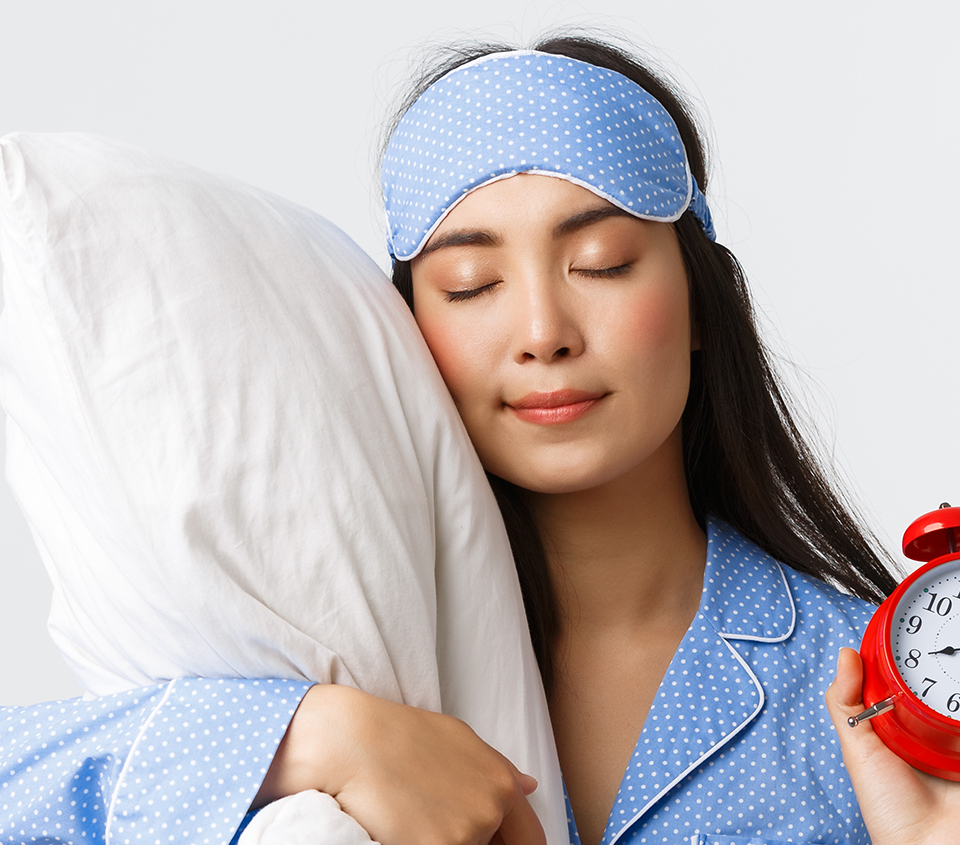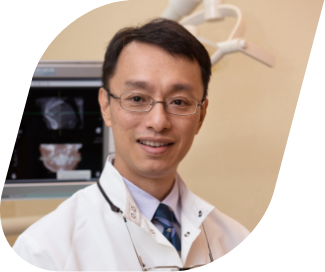Obstructive sleep apnea
30 minute consultation
A good night’s rest changes everything. Book a consult for a diagnosis and treatment plan.
Or call: +65 6734 9393

Breathe easy
There is a common misunderstanding that everyone who snores has obstructive sleep apnea, and everyone who has sleep apnea snores. An individual with sleep apnea is rarely aware of having difficulty breathing, even upon awakening. Understanding the signs of sleep apnea is the first step to knowing if you need to seek medical intervention. Severe health conditions might be a consequence if left untreated.
Obstructive sleep apnea treatment fees
Wondering if Medisave can be used for this procedure?
Medisave does not apply to obstructive sleep apnea treatment.
For more details on Medisave coverage, please visit our Medisave Page.

What is obstructive sleep apnea?
Obstructive sleep apnea is a type of sleep disorder characterised by pauses in breathing or instances of shallow or infrequent breathing during sleep. Each pause in breathing, called an apnea, can last from 10 seconds to several minutes, and may occur 5 to 30 times or more an hour. Each abnormally shallow breathing event is called a hypopnea.
Sleep apnea is recognised as a problem by others witnessing the individual during episodes or is suspected because of its effects on the body. Symptoms may be present for years (or even decades) without identification, during which time the sufferer may become conditioned to the daytime sleepiness and fatigue associated with significant levels of sleep disturbance. Sleep apnea not only affects adults, but some children as well.
What is involved during sleep apnea treatment?
Management of this condition is multi-specialty involving dentists, ear, nose and throat, and sleep disorder doctors. Our dental specialist/ dentist will find out the details of your medical and dental history, perform a consultation and examination and take a digital X-ray of your teeth and jaws to enable a thorough and detailed diagnosis, to ascertain if you have sleep apnea, and to determine the most appropriate form of treatment.
At Specialist Dental Group, our dental specialists provide oral appliances and jaw surgery treatment for sleep apnea. Continuous Positive Airflow Pressure (CPAP) Machine and other surgical procedures are alternative treatment options.
Oral appliances
Our dental specialists/ dentists can fabricate an oral appliance called a mandibular advancement splint. This is a custom-made mouthpiece that shifts the lower jaw forward and opens the bite slightly, which opens up the airway. Oral appliance therapy (OAT) is usually successful for those with mild to moderate obstructive sleep apnea. OAT is a relatively new treatment option for sleep apnea in the United States, but it is much more common in Canada and Europe.
Continuous Positive Airflow Pressure (CPAP) Machine
The CPAP machine is suitable for moderate to severe obstructive sleep apnea. This device is a mask-like machine that covers the nose and mouth and provides a constant stream of air that keeps breathing passages open while sleeping. The air pressure prevents apneas and has the additional benefit of reducing or eliminating the snoring that sometimes accompanies sleep apnea.
Surgery treatment
Several surgical procedures are used to treat sleep apnea, although they are normally the second line of treatment for those who reject CPAP treatment or are not helped by it. Surgical treatment for obstructive sleep apnea needs to be individualized to address all anatomical areas of obstruction. Often, correction of the nasal passages needs to be performed in addition to correction of the oropharynx passage. Base-of-tongue advancement by means of advancing the genial tubercle of the mandible may help with the lower pharynx. Many other treatments are available, including hyoid bone myotomy and suspension and various radiofrequency ablation. Other surgery options may attempt to shrink or stiffen excess tissue in the mouth or throat.
Lifestyle modifications
Lifestyle modifications can go a long way in reducing sleep apnea symptoms. Avoidance of alcohol, sleeping pills, and other sedatives can help. These have a tendency to relax throat muscles, contributing to the collapse of the airway at night.
As sleep apnea is inherently worse when you lie down on your back with the face upwards (supine) position for many patients, sleeping on one’s side is often advised. Possibly owing to changes in pulmonary oxygen stores, this position has been found to be helpful for central sleep apnea.
Being overweight can worsen sleep apnea and your doctor may advise you to diet.
Meet our dental specialists in Singapore
Our fully trained team is dedicated to keeping timely and painless care of your teeth.
Frequently asked questions
What are the symptoms of obstructive sleep apnea?
The most common signs and symptoms of obstructive and central sleep apnea include loud snoring, not breathing during sleep, gasping for air, waking up with a dry mouth, head aching in the morning, difficulty sleeping (insomnia), excessive daytime sleepiness (hypersomnia), unable to focus while awake, being irritable.
What are the different types of obstructive sleep apnea?
Central sleep apnea, obstructive sleep apnea and complex apnea.
What is central obstructive sleep apnea?
In central sleep apnea, breathing is interrupted by a lack of respiratory effort, typically for 10 to 30 seconds, either intermittently or in cycles and is usually associated with a reduction in blood oxygen saturation.
What is obstructive obstructive sleep apnea?
In obstructive sleep apnea, breathing is interrupted by a physical block to airflow despite respiratory effort, and snoring is common.
This is the most common category of sleep-disordered breathing. The muscle tone of the body ordinarily relaxes during sleep, and at the level of the throat the human airway is composed of collapsible walls of soft tissue which can obstruct breathing during sleep.
The development of obstructive sleep apnea in children is different from that in adults. If a child has a chronically blocked nose due to inflammation of the nasal airways or sinuses, the child will tend to breathe through his or her mouth during sleep. Prolonged breathing through the mouth has been shown to affect a child’s facial development and possibly trigger the development of obstructive sleep apnea.
A child with obstructive sleep apnea is more likely to exhibit daytime inattention and hyperactivity.
Obstructive sleep apnea affects more adult men than women. It leads to daytime sleepiness.
The risk of obstructive sleep apnea rises with increasing body weight, active smoking and age. In addition, patients with diabetes or borderline diabetes have up to 3 times the risk of having obstructive sleep apnea.
Research has also shown that obstructive sleep apnea is a risk factor for hypertension, stroke and heart failure in adults.
What is complex or mixed sleep apnea?
Complex apnea is a combination of both central and obstructive apnea. Some people with sleep apnea have a combination of both types.
When obstructive sleep apnea syndrome is severe and longstanding, episodes of central apnea sometimes develop.
The exact mechanism of the loss of central respiratory drive during sleep in OSA is unknown but is most commonly related to acid-base and Carbon Dioxide feedback malfunctions stemming from heart failure.
There is a constellation of diseases and symptoms relating to body mass, cardiovascular, respiratory, and occasionally, neurological dysfunction that have a synergistic effect in sleep-disordered breathing.
How do I know what type of sleep apnea I have?
The symptoms of obstructive and central sleep apnea may overlap. To determine exactly what type of sleep apnea you have, you will need to seek professional help. You may be required to perform a sleep test.









